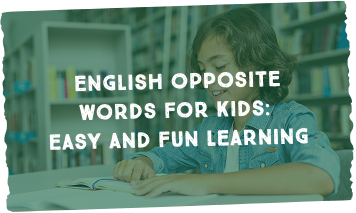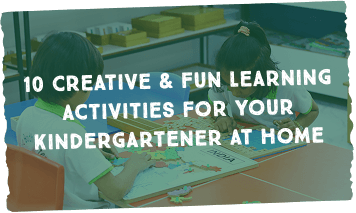‘Music can change the world’, you’ve heard this statement, haven’t you? Music has a vital role to play in shaping human culture and development. Early exposure to musical instruments enhances cognitive skills, creativity, and emotional expression. Music, songs, tunes and beats become a part of every kid’s life. Many of you may sing songs for your little ones to calm them down, engage them, or put them to sleep. Musical instruments are popular among children, whether drums, pianos, or xylophones. However, the world of musical instruments is vast. Therefore, introduce them to musical instrument names, whether or not your little one is inclined towards music.
Are you wondering about how and when to introduce your little ones to the names of musical instruments? The guide has answers to all your questions. So, stay tuned!
Learning the names of musical instruments benefits children in the following ways:
Let’s explore some musical instruments by name for children:
They are a pair of small drums from Cuba and are wide open at the bottom. The small-sized drums are called machos, which creates high pitches. On the other hand, the big ones are called hembra and create deep tones. Play the instrument with your palm or fingertips. The little ones will love bongo drums because they are the best for quick energetic rhythms.
The flute is a delicate metal or wooden musical instrument. Blow it across the hole to create gentle sounds. Begin with a recorder for children because operating a recorder will be easier for the little ones.
A keyboard is an electronic variant of the highly popular musical instrument, the piano. Press the keys to play the instrument or create synth sounds and noises.
The table is a pair of music instruments Indian. The drum on the right side is usually small in size, while the one on the left is big. The two drums of different sizes help create complicated rhythms in Indian classical music. When you teach the little ones about the tabla, you can tap your knees like a tabla player.
A xylophone features bars manufactured from wood or metal. They look bright and colourful. Pluck the colourful bars using mallets for vibrant, ringing notes.
The violin is a common musical instrument and highly popular. It features 4 strings and is played using a bow. It is the main centre of attraction in orchestras and has small variants for children.
The harmonica is a small instrument with holes in between. Blow air through them to play any type of music as per your choice.
The accordion is a musical instrument with a box-shaped structure. It features keys and buttons on both sides. Squeeze the buttons on the folding side to push air in between the reeds, which helps create rich, vibrant sounds. An accordion is famous in folk music, and the weight of some of these instruments is the same as toddler.
Maracas are shakers that originated in Latin America. Filled with seeds and pebbles, this musical instrument is traditionally manufactured from dried gourds. But in the contemporary world, maracas are available in multiple sizes and materials such as wood, plastic, etc. You can make this instrument at home. Surprised right? Fill beads, dried beans, or rice in water bottles, and shake them well to make festive rhythms.
Maracas are shakers that originated in Latin America. Filled with seeds and pebbles, this musical instrument is traditionally manufactured from dried gourds. But in the contemporary world, maracas are available in multiple sizes and materials such as wood, plastic, etc. You can make this instrument at home. Surprised right? Fill beads, dried beans, or rice in water bottles, and shake them well to make festive rhythms.
With origins in Europe, the Zither is a musical instrument featuring flat strings. Keep the instrument on your lap and pluck its strings for sober, harp-like sounds. Do you know? This musical instrument has been a part of the Harry Potter series!
Here is how you can teach the little ones the names of various musical instruments:
There are various ways to entertain your child with musical instruments. The main thing is to create an enjoyable, supportive environment that promotes exploration and innovativeness. Here are some fun activities that will keep your little ones engaged and help them get familiar with music instruments Indian:
Fill a bottle with rice to create a shaker or tie a box with rubber bands to create a guitar-like instrument, and teach them about the guitar.
Play various musical instruments like flute, drum, violin, piano, harmonium, tabla, or guitar. Tell kids the names while playing each instrument, and then ask the children about the instruments.
Take a paper and write the musical instrument names on one side. On the other side, draw a picture of musical instruments or paste their images. Match the names to the photographs while teaching.
This activity is like musical chairs. Ask the children to do some activities when the music plays. When it stops, ask them to pick any musical instrument and play until the recorder starts playing again. This helps them familiarise themselves with different sounds and identify musical cues.
Ask one child to act as the seeker, and ask the other kids to hide with their musical instruments. Tell the hiding kids to play their respective instruments periodically to give hints to the seeker, helping to find friends and cousins. Such activities enhance listening skills and teamwork.






